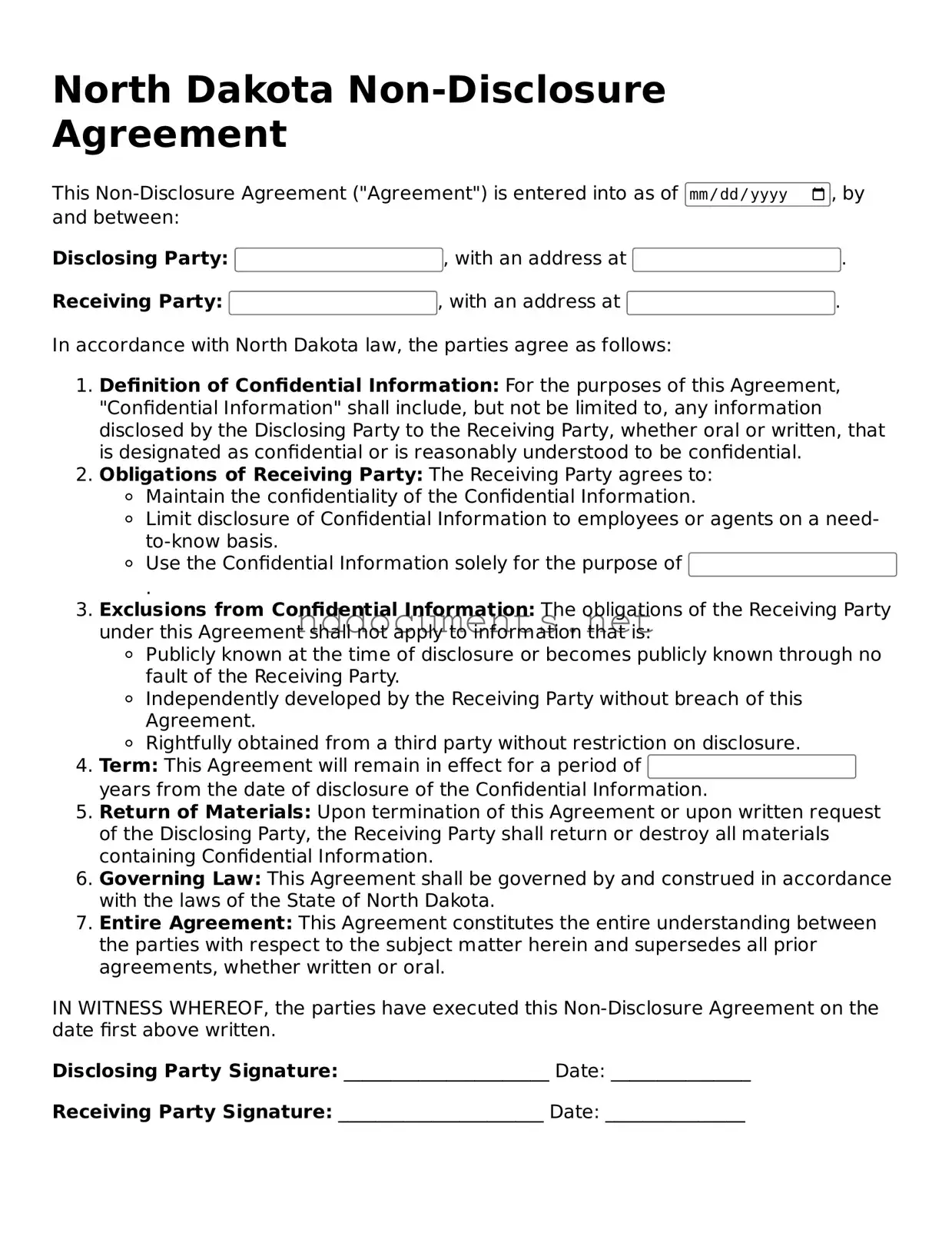Fillable Non-disclosure Agreement Document for North Dakota
A North Dakota Non-disclosure Agreement (NDA) is a legal document designed to protect confidential information shared between parties. This form establishes a framework for maintaining privacy and safeguarding sensitive data, which is crucial in various business and personal relationships. Understanding its components and implications is essential for anyone looking to engage in discussions involving proprietary information.
Make Your Document Online
